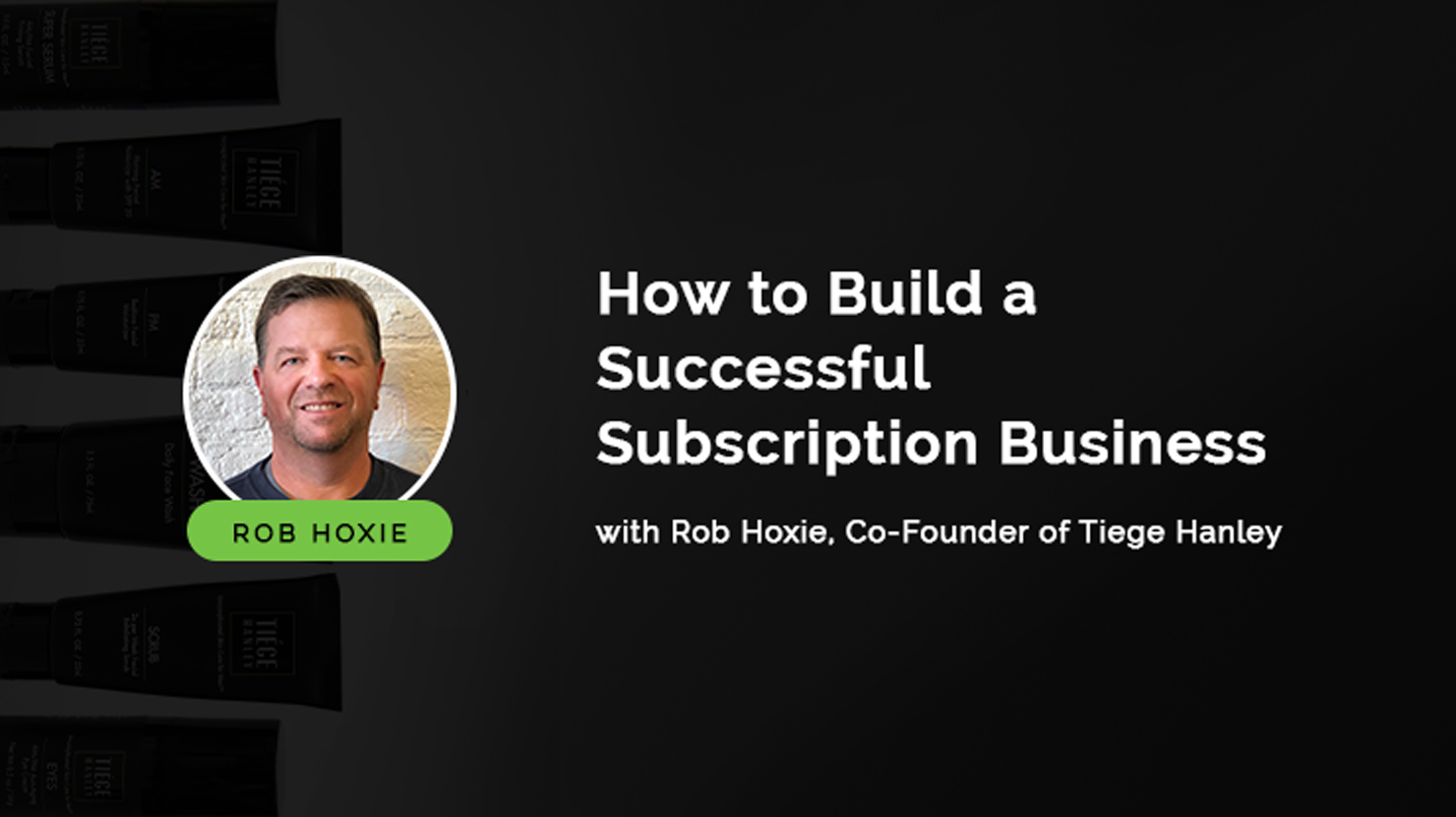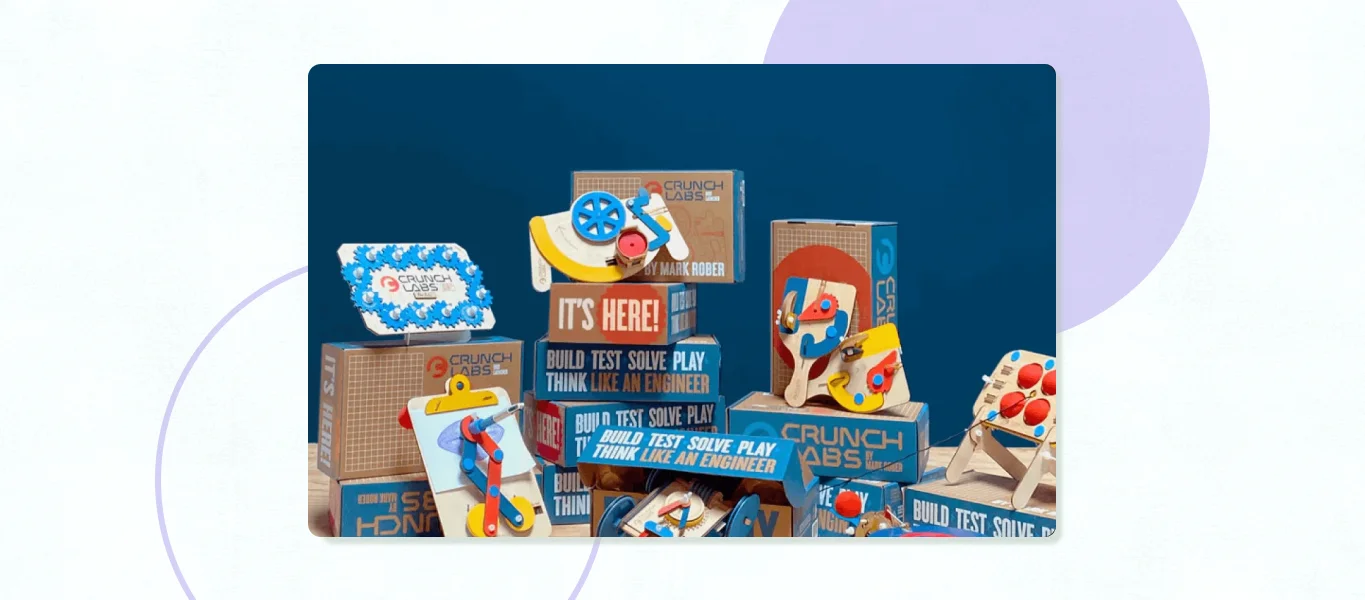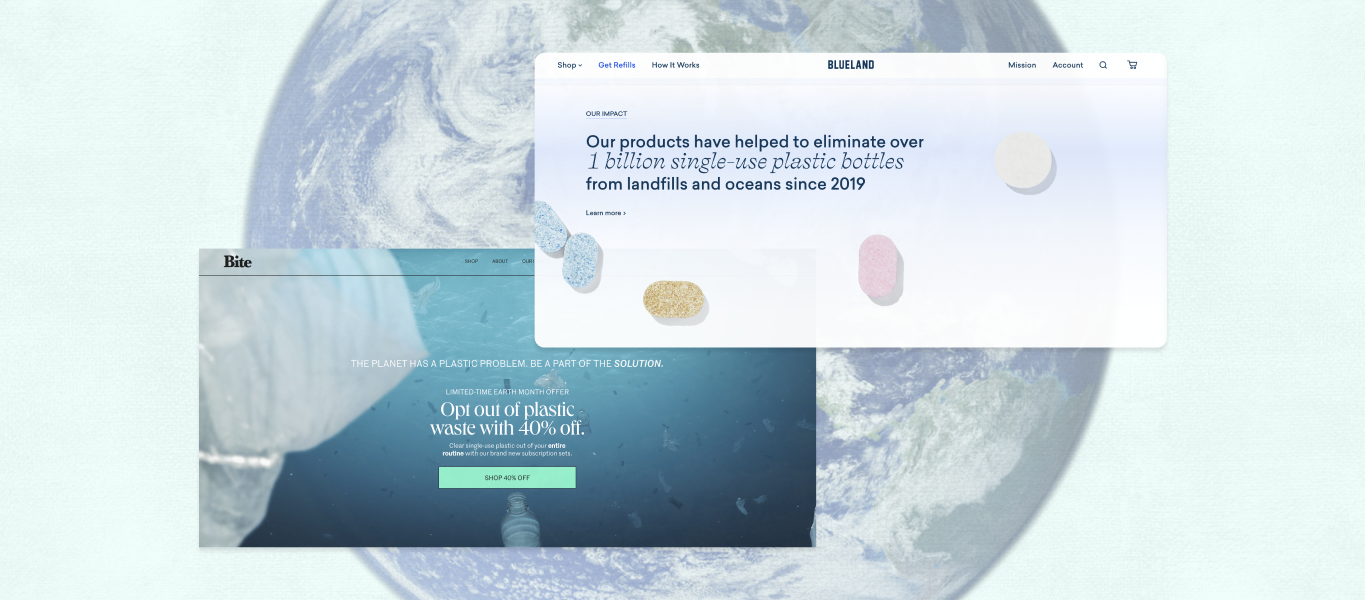What’s the key to building a successful subscription business? It’s probably the biggest question on your mind if you’re starting one of your own — or even if you’ve been running one for some time. In our effort to help new subscription business owners — and all those who may be struggling to grow — we’ve started a new initiative. In the next few months, we’ll be interviewing some of the top subscription business owners we work with about how they’ve gotten where they are now, and what advice they may have for others.
To kick off this series, we sat down with Rob Hoxie, Co-Founder of Tiege Hanley — a men’s skincare subscription company that has seen incredible growth in a short amount of time. Since their ecommerce store went live in mid-2016, Tiege Hanley has gathered tens of thousands of subscribers, and they continue to grow steadily. How’d they do it? That’s what we asked Rob about.
Q: We’ve heard you have an interesting story about how your company got started. The original idea actually didn’t do so well — until you refined it?
Rob Hoxie: That’s true. I had a friend all through high school and college named Kelley Thornton — and after college, I pursued a career in the software industry and Kelley went into the world of consumer package goods (CPGs). We kept in touch, and after the software company I’d be working with for 20 years sold, Kelley reached out to see if I wanted to start a company with him. He was seeing a huge surge in the sales of men’s products, especially personal care and skincare — and he wanted to take advantage of that trend. After doing some research in that category, we decided to create a curated box of men’s skincare products that could be ordered online. We thought it would be a huge success, because of the growing demand in this product category — and because we knew men weren’t very interested in going out and shopping for skincare products in person.
However, it didn’t end up being as much of a hit as we thought it was going to be, partly because we were just putting together a box of our favorite products. And men could buy them on Amazon or other online retailers. We knew we weren’t doing something right and needed to adjust the business plan.
That’s when we ran into Aaron Marino, who had a successful YouTube channel called Alpha M. — where he’d built up a following of more than 750,000 subscribers by teaching men how to improve their grooming, wardrobe, fitness, and lifestyle. So we reached out to him to see if he would be interested in helping promote Tiege Hanley. He agreed, but right before signing on the dotted line, he also gave us some honest feedback. He loved the category and the idea behind what we were trying to do, but he thought we were doing it wrong. We needed to have our own brand, and we needed to create a subscription — because skincare products are something people will always need more of. We knew he was onto something, so instead of just having Aaron promote Tiege Hanley, we asked him if he wanted to become a partner and help us build this type company. That’s when Tiege Hanley as we know it today was born.
Q: What do you think is the key to creating a successful subscription business?
Rob Hoxie: The subscription business really is great. It really is what people crack it up to be. But, of course, that only comes with having the right product and the right target in mind. I think we really picked the right type of product at the right time with men’s skincare. It’s considered one of the last bastions in the beauty world. Plus, it’s perfect for subscriptions. People will continually run out of face wash, face scrub, and moisturizer. Our strategy centered around the idea that if we’ve created a superior product, which I think we really have, they’ll keep coming back. In the end, I would say you really need to consider whether there’s a need for what you’re selling, and whether it’s a one-time need or a constant one.
Q: Ok, so once you’ve got the right product and the right target, what else?
Rob Hoxie: Simplicity. Coming from a tech background, I’ve always been a fan of Apple and their simplicity model. That’s reflected in the fact that we have just three choices for subscriptions at Tiege. We try to avoid complexity, and I think that’s one of the things that’s helped us be successful. More choices isn’t always better for the customer experience — or for conversions.
Our next focus was retention. It’s easy to get caught up in focusing on sales and trying to get more subscribers, but in retrospect, the time and energy and thought that goes into keeping subscribers is just as important — if not more. You can learn it the hard way, or you can plan for it from the start: how are you going to keep your customers happy and engaged?
Q: How do you keep your customers happy and engaged?
Rob Hoxie: One of the major things that helped us launch successfully and build a loyal community of not just subscribers, but what I’d even call “fans,” is something Aaron actually came up with. When Aaron, Kelley, and I had inked our partnership, we were starting at ground zero. All we had was a signed contract — and an entire business to build. That’s when Aaron came up with the idea to video blog about the process of creating this company.
He wanted to create a YouTube channel where we would document this whole journey for everyone to see. Kelley and I were skeptical at first, but it turned out to be a brilliant idea. After 35 video blog posts, when we finally launched the site, we had something like 5,000 followers ready to become subscribers — and they were engaged followers, too — because we hadn’t just been telling them about what we were doing, but also asking for feedback along the way. We really included our audience in the process, asking them to help pick packaging designs, suggest tagline ideas, and give their opinions on everything we did. It made people feel like they were a part of something — as opposed to just buying a tube of moisturizer from a big consumer product company. Forming that kind of community from the start is an amazing thing if you can pull it off.
Q: What about after launch? Have you kept listening to customer feedback since then?
Rob Hoxie: Of course. We had built up this great community that was already used to letting us know what they thought, so we encouraged that. We got tons of emails right after we launched — many of which we printed out and still have hanging on a wall in our office. A lot of what people said was incredibly positive, but there were also suggestions for improvement in there. For example, we had tried to make sure that the size of all of our products was just enough to last the average user an entire month — but we heard that a couple of the products were maybe just a little too small and subsequently increased the size in our next production order.
Q: Beyond just listening to customers and taking their suggestions to heart, is there anything else you think is important for retention?
Rob Hoxie: You can’t slack off when it comes to customers who pause their subscriptions. We’ve made it relatively easy for our customers to pause using the Recharge customer portal. However, we then have to make sure that we’re always encouraging those customers to resume their subscriptions. We send out emails reminding people to come back, because their skin matters.
Q: Have you encountered any challenges being in the consumer packaged goods market, where there’s a lot of competition from big names?
Rob Hoxie: Sure, there’s a lot of competition out there from traditional skincare companies, but we’ve been successful by being different from the big guys. We’re a small company that has great products and does things a bit differently. We grew up on social media. We were pretty much created on top of a YouTube channel. We reach people differently than a traditional company, and our customers like that. It’s helped us carve out a very successful niche for ourselves.
That would be my recommendation to others: think about how you can be different from the big names in your industry by engaging with your customers in a more personal way.
Q: How big of a role has technology played in your success?
Rob Hoxie: Having the right technology partners is something that I think is incredibly important for the success any online business. It’s easier said than done when you’re a startup, though. Sometimes you choose who you choose, because you don’t have a ton of funds in the beginning. We actually started out on WooCommerce and WordPress, and we muddled through for a while and outsourced tech support when we needed to. Once we had thousands of subscribers, we realized we needed a company behind us that could provide professional, 24/7 support and a lot more stability. We switched to Shopify and Recharge in mid-2017 and that’s really made us feel a lot more confident in our ability to scale.
Q: You mentioned how great the subscription business model is earlier. For our last question, tell us why you think so.
Rob Hoxie: The great thing about a subscription businesses is that you don’t have to rely on one-time purchases. As a business owner, you can plan better and see into the future more accurately — compared to a more traditional model where you hope customers come back and buy again from you. With a subscription, you’ve sold what is hopefully a great product, and it’s easy to continue doing business together.



